Soft Sweet Cream Pancakes Recipe
Imagine the softest, fluffiest pancakes with an almost melt-in-the-mouth texture. That’s what these sweet cream pancakes are. They’re tender and flavorful, thanks to adding heavy cream to the batter.
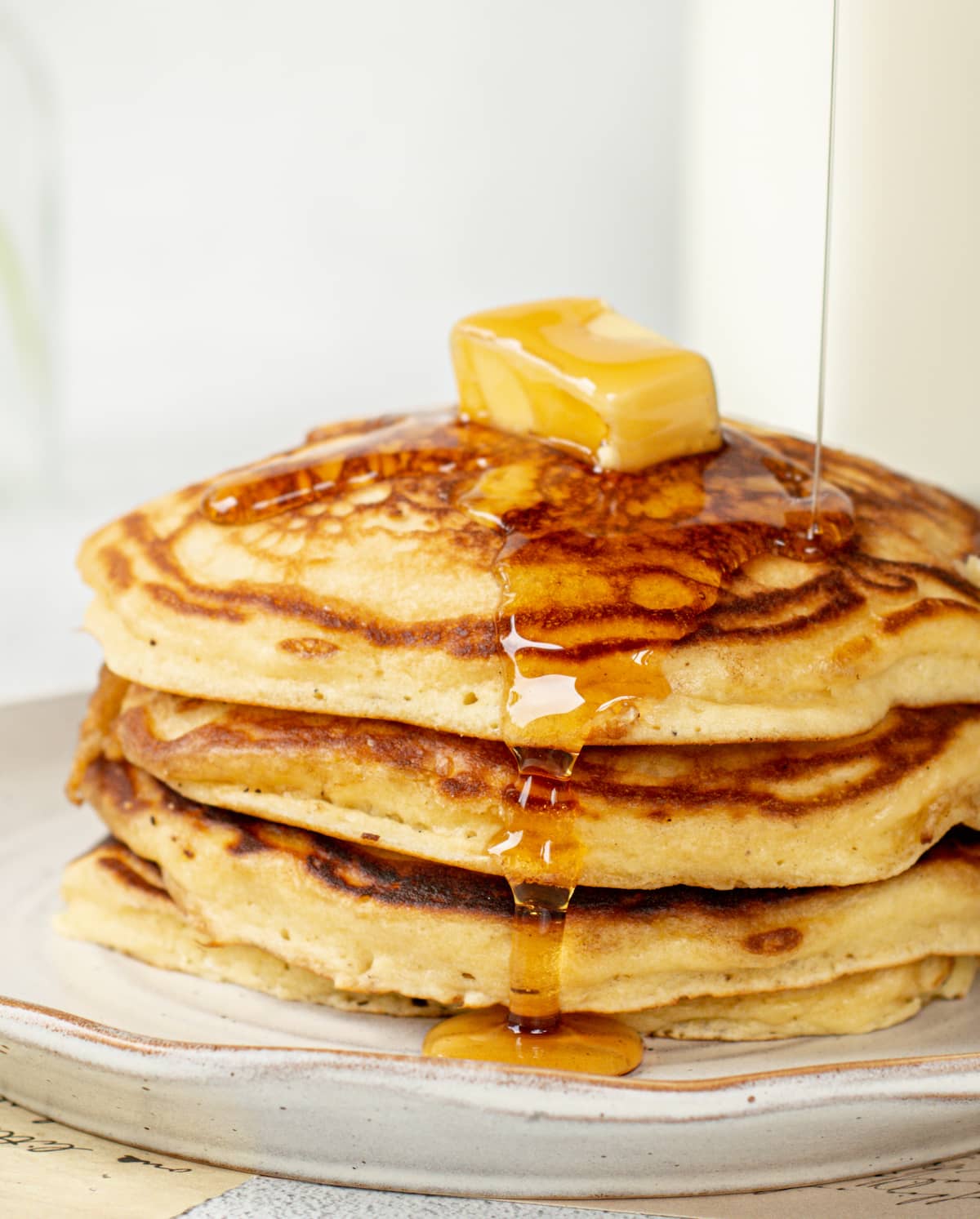
These sweet cream pancakes are really tender and light, with a soft fluffy texture. They’re extremely more-ish, and before you know it you can eat a whole stack! The batter is simple, too, with no separating egg whites or any tricky stuff needed.
What makes them different from regular pancakes is the addition of cream to the batter. The cream adds extra fat, moisture, and flavor to the batter to make tender pancakes. There’s a little milk added, too so it’s not full-on cream, but only half the amount. After all, the cream makes these delicious pancakes what they are.
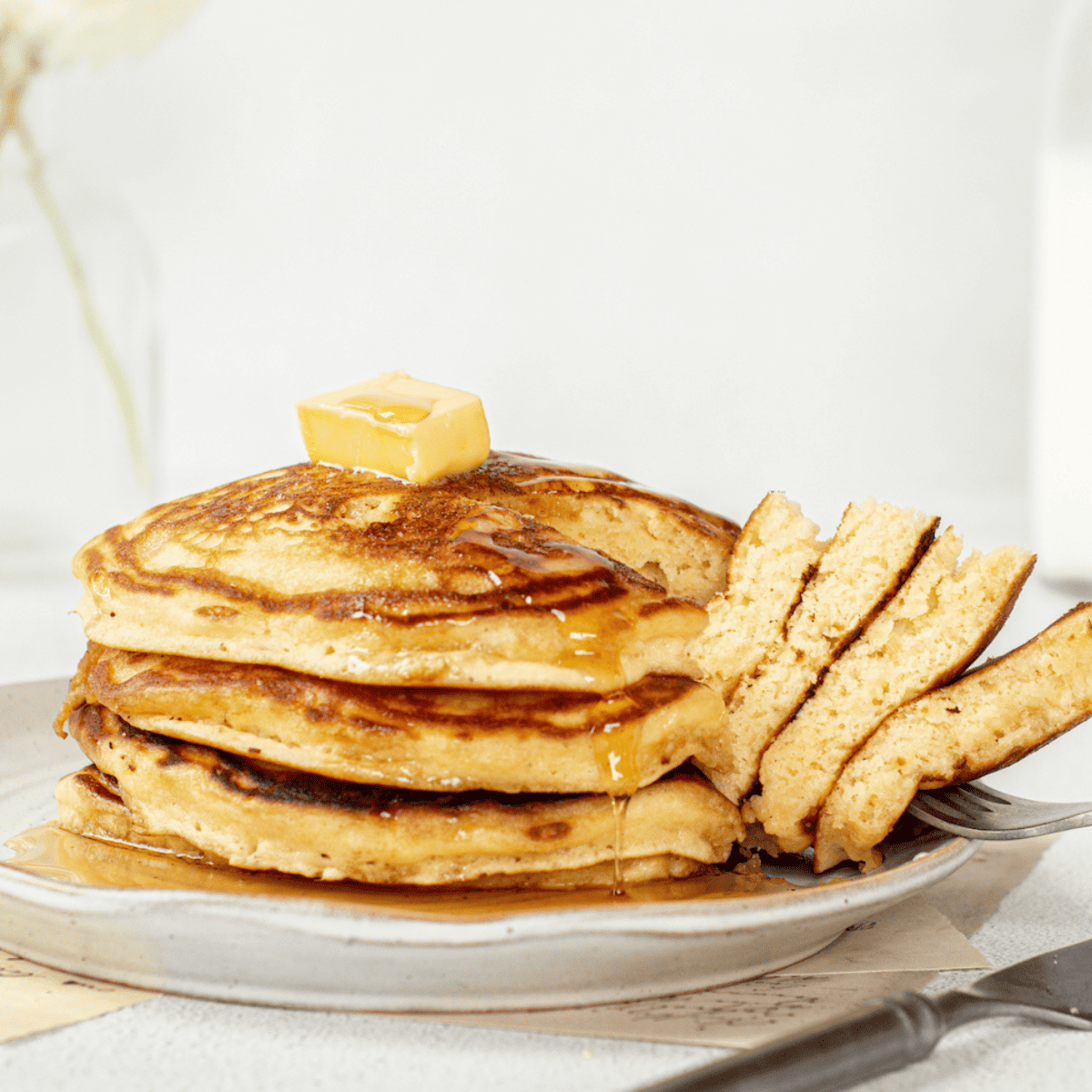
Ingredients
The full list of ingredients for these fluffy pancakes are listed in the recipe card at the bottom of this post. Here’s a quick rundown of what’s needed.
- All-purpose flour. They make the base of the pancake batter. You can substitute this with your favorite all-purpose gluten-free flour blend.
- Baking powder + baking soda. The leavening agent to give a great rise. Ensure when mixing them into the flour that you mix it well before adding any other ingredients so there are no lumps. There’s nothing worse than biting down on a lump of baking soda!
- Salt. This is a great flavor enhancer
- Sugar. Granulated sugar, or use a sweetener of your choice. There’s not a huge amount of sugar in the batter, only 50 grams (1/4 cup sugar), as the toppings on pancakes are usually sweet too.
- Eggs. Large eggs. They help give the pancakes structure.
- Vanilla extract or vanilla paste.
- Heavy cream. This brings richness and it’s what makes these the best pancakes. There are a few types of cream that can be used too. See below for more information.
- Milk
- Vinegar or lemon juice. Only half a teaspoon, but this acid reacts with the baking soda to give the best rise. You can use fresh or bottled lemon juice, apple cider vinegar or white vinegar.
Equipment
To make pancakes easily, I recommend a griddle pan. Griddle pans have low sides so that the pancakes can be flipped over easily. You can also fit more than one pancake on a big griddle pan.
If you have no griddle pan, use a cast-iron skillet or a large nonstick skillet and cook the pancakes one at a time.
The cream and milk + substitutions
This sweet cream pancake batter uses heavy cream, also known as pouring or heavy whipping cream. It has a fat content of around 36%. Milk is also added to the recipe, meaning you’re essentially using half and half. ‘Half and half’, is found in the US and is a mixture of 1/2 cream and 1/2 milk.
Because it’s not found everywhere, this recipe uses heavy cream and milk instead. Don’t substitute the milk for extra heavy cream, or they’ll be too tender and difficult to flip.
If you don’t have milk, you can use water for the milk part instead.
There are a few other types of cream that can be used as well
- Whipping cream (with a fat content of around 30%). This can also be used instead of the heavy cream, bringing slightly less fat to the batter.
- Single cream (with a fat content of around 20%). The heavy cream can be substituted with single cream. This doesn’t result in quite as tender pancakes, but the result still gives more flavor and better texture than milk.
- Half and half. (no more than 18% fat). If using half and half, then substitute the milk in the recipe for the half and half as well. Half and half is already a mixture of cream and milk.
The milk component can be swapped for buttermilk, too. If using buttermilk, omit the vinegar or lemon juice. Buttermilk is already acidic, and this will react with the baking soda.
The difference between buttermilk pancakes and these sweet cream pancakes is the addition of the cream.
Method
Add flour, sugar, baking powder, baking soda, and salt in a large bowl. Use a balloon whisk to mix the dry ingredients and ensure no lumps of baking powder or baking soda remain.
If your baking soda is clumpy, break it apart with your fingers before adding it to the bowl and sprinkle it over the flour.
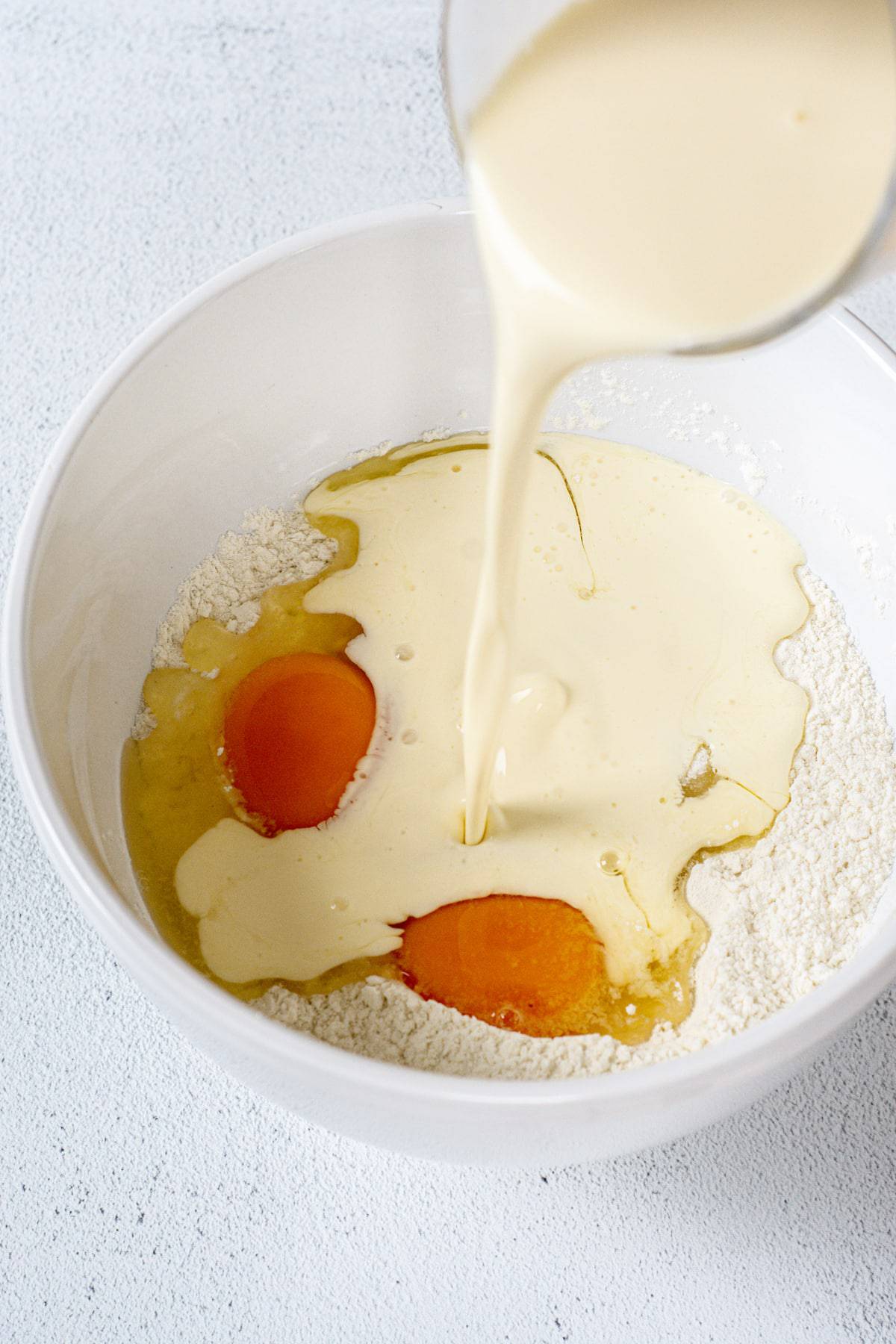
Add the eggs, vanilla, cream, milk, vinegar, or lemon juice.
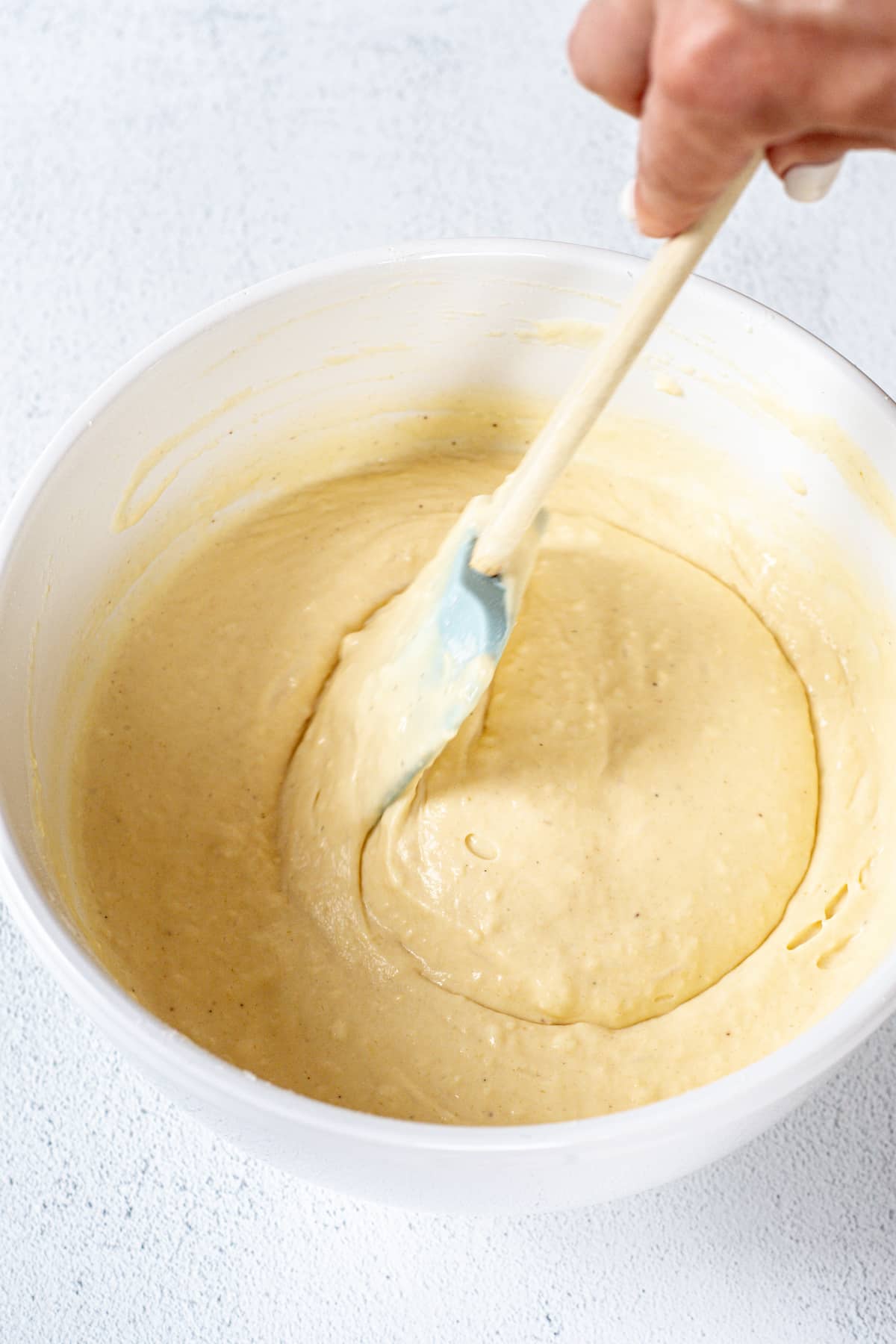
Mix everything together until well combined, but don’t over-mix the batter. Don’t worry if there are small lumps.
Cooking
Preheat a pancake griddle, cast-iron, or non-stick pan over medium-high heat, then grease the pan with butter.
Ensure the pan is hot and the butter is sizzling, then pour in around ⅓ cup of pancake batter for each pancake.
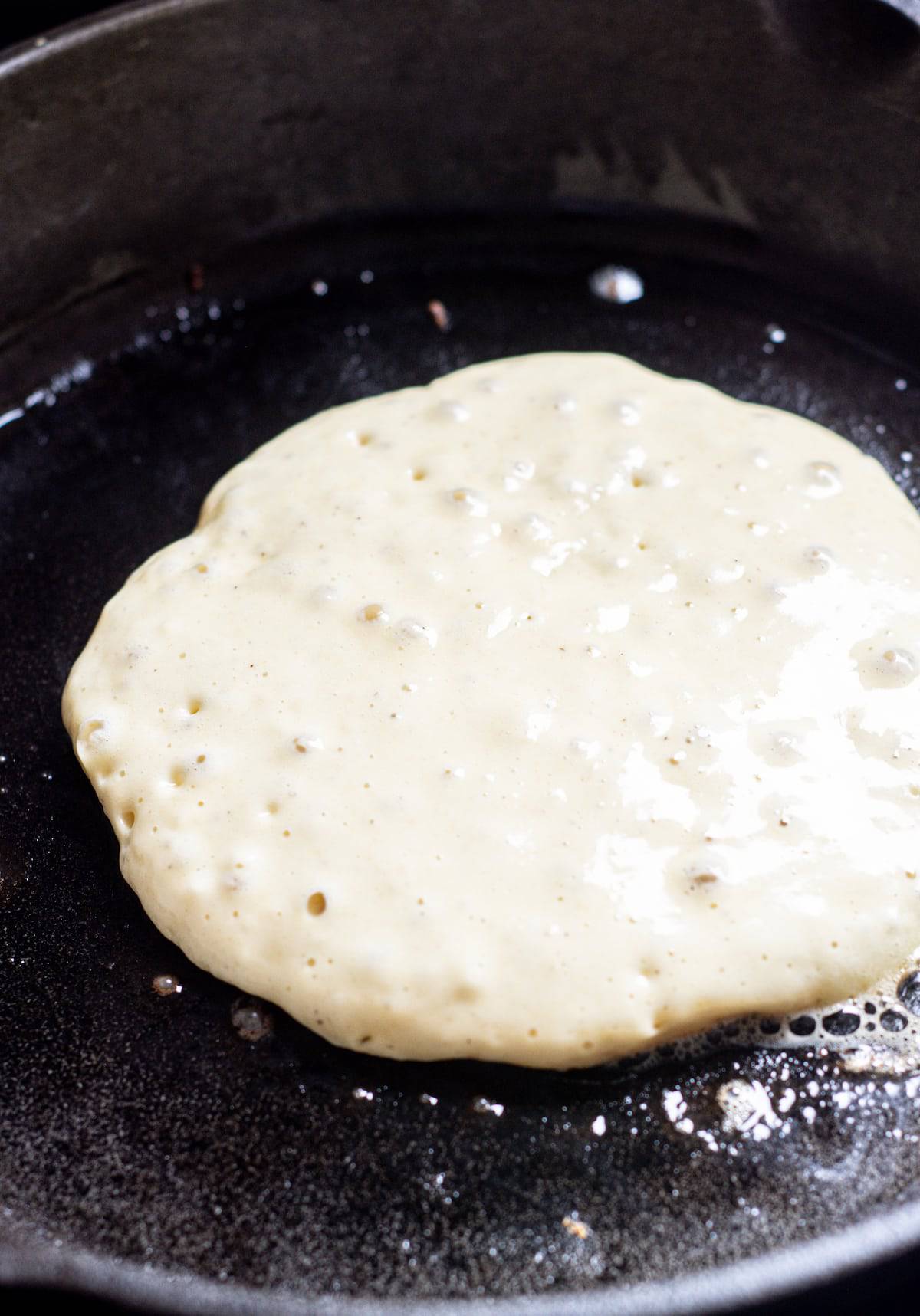
Don’t spread the batter out. This keeps them fluffy and thick. It also keeps the round shape better.
If yours aren’t properly round, don’t worry; it’s not the shape that makes a perfect pancake.
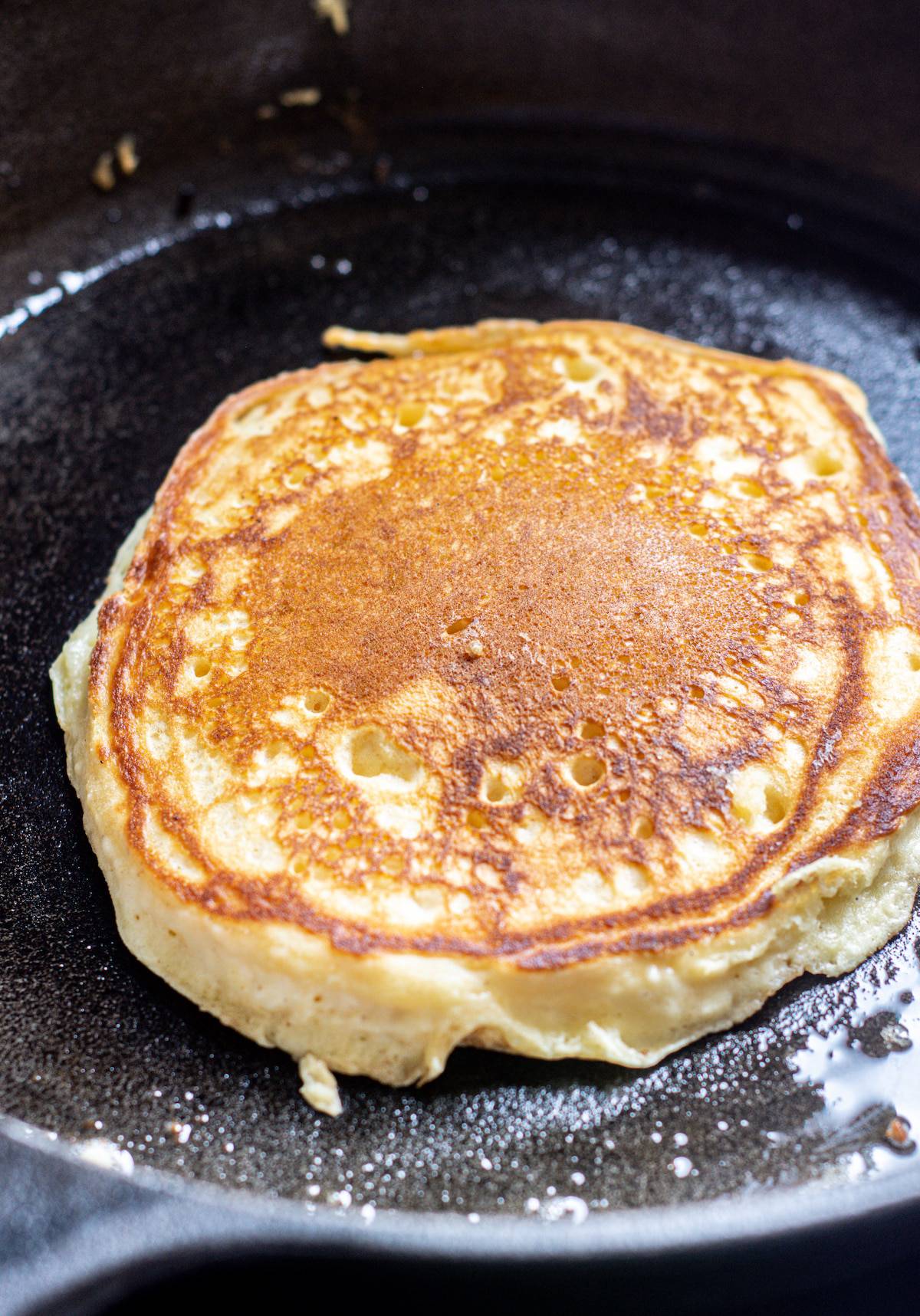
If the pan gets too hot, turn the stove to medium heat once you’ve scooped in the batter.
Little bubbles will start appearing on the surface of the pancake. After about 2-3 minutes, flip the pancake over and cook the other side for another minute or 2.
As the batter sits, it will thicken up and become quite airy. This is because the acid is reacting with the baking soda.
The timings will change depending on your stove, the pan you use, and the size of the pancake, so keep an eye on it and adjust the cooking time and temperature as needed. The pancakes should be deep golden brown once cooked.
These pancakes are very tender and soft, so flip them carefully so they don’t get squashed. Transfer the pancake to a plate and continue with the rest of the batter until it is all used up, stacking the pancakes in a pile as you go.
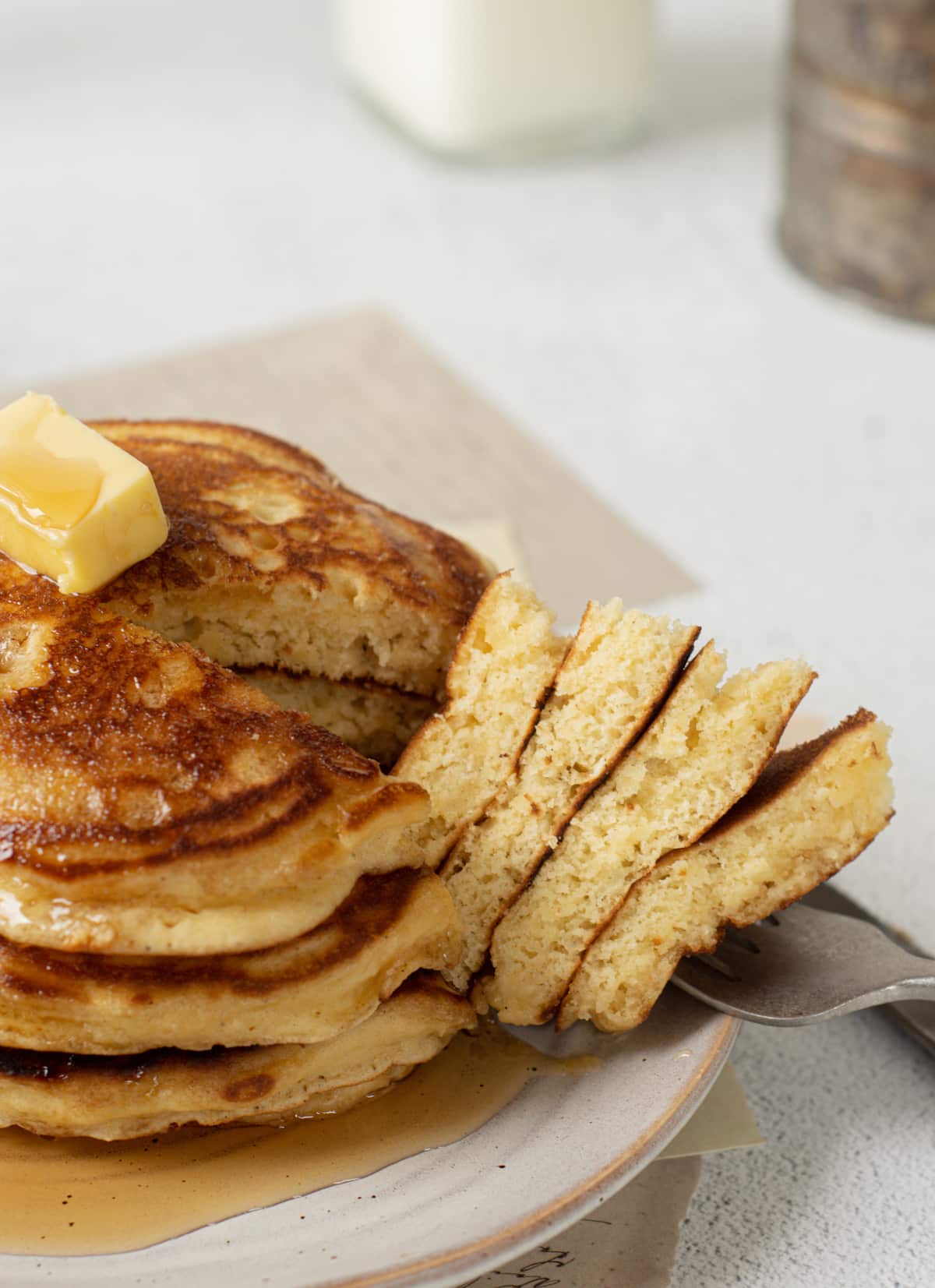
Serving
Pancakes taste best right after they are made. Stack em up and serve with your favorite pancake toppings. Leftover pancakes can be refrigerated for up to 3 days in an airtight container or frozen for long-term storage.
FAQs
Classic toppings like real maple syrup, fresh berries or other fresh fruit, whipped cream, bacon, and butter are excellent choices. However, given their rich taste, they pair well with more adventurous toppings like caramel sauce.
Yes! Place cooled pancakes in a single layer on a baking sheet, freeze until solid, then transfer to a freezer bag. They can be stored for up to 2 months. Reheat directly from the freezer in a toaster or oven.
Definitely! You could add in lemon zest, orange zest, blueberries, a little cinnamon, or chocolate chips! If adding chocolate chips or blueberries, add 1/3 cup of batter to the pan first and then drop in a small handful of berries or chocolate chips.
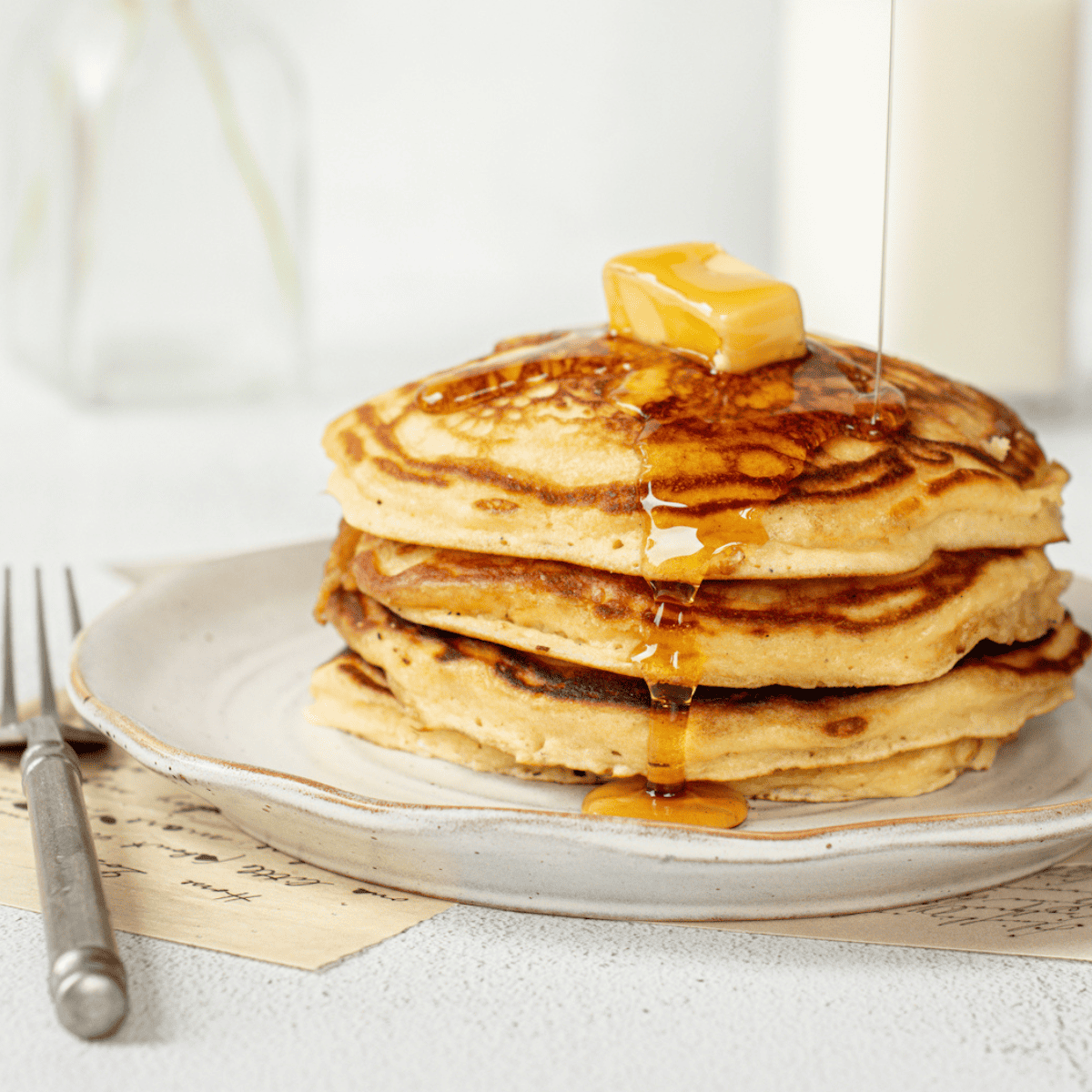
Related recipes
Looking for more pancake recipes? Try overnight sourdough pancakes, or Strawberry banana pancakes!
Or, for a sweet treat, give these double chocolate hot cross buns a go!
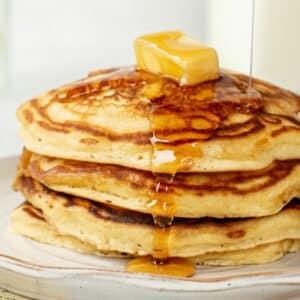
The Best Sweet Cream Pancake Recipe
Ingredients
- 250 g all-purpose flour
- 2 1/2 tsp baking powder
- 1/2 tsp baking soda
- 1/2 tsp salt
- 50 g granulated sugar
- 2 large eggs
- 1 tsp vanilla paste or extract
- 240 g heavy cream or pouring cream
- 125 g milk
- 1/2 tsp lemon juice or apple cider vinegar
Instructions
- Add flour, sugar, baking powder, baking soda, and salt in a large bowl. Use a balloon whisk to mix the dry ingredients and ensure no lumps of baking powder or baking soda remain.
- Add the eggs, vanilla, cream, milk, vinegar, or lemon juice. Stir it all together until well combined. It should be a thick but still pourable batter.
- Preheat a griddle pan, cast-iron, or non-stick pan over medium-high heat, then grease the pan with butter.
- Ensure the pan is hot and the butter is sizzling, then pour in around ⅓ cup batter for each pancake. Don't spread the batter out; this keeps them fluffy and thick. If the pan gets too hot, turn the heat to medium heat once you've scooped in the batter.
- Little bubbles will start appearing on the surface of the pancake. After about 2 minutes, flip the pancake over and cook the other side for another minute or 2. The timings will change depending on your stove, the pan you use, and the size of the pancake, so keep an eye on it and adjust the cooking time and temperature as needed. The pancakes should be deep golden brown once cooked.
- Transfer the pancake to a plate and continue with the rest of the batter until it is all used up, stacking the pancakes in a pile as you go. As the batter sits it will thicken up and become quite airy. This is because the acid is reacting with the baking soda. If it gets too thick, you can add a splash more milk.
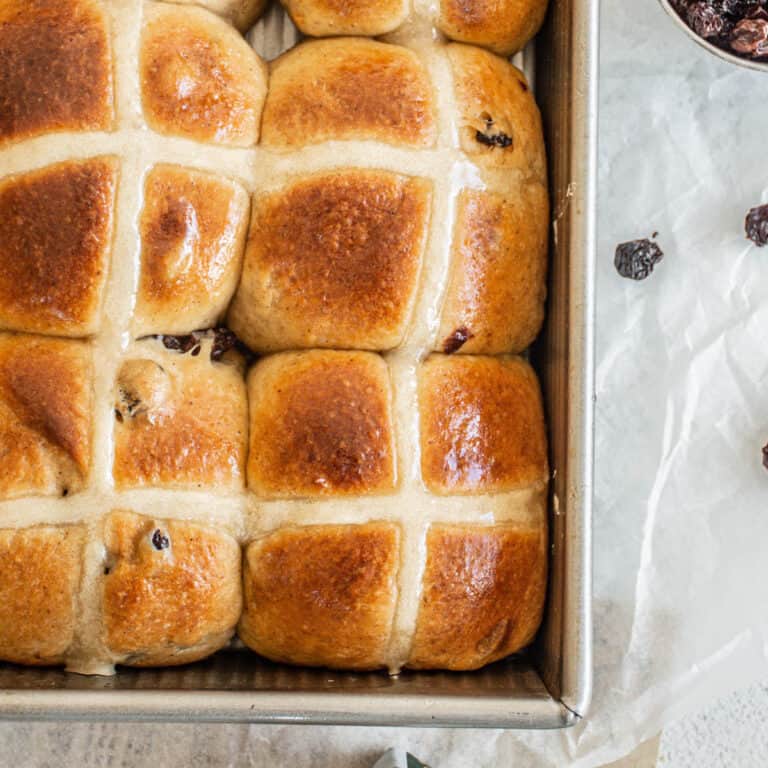
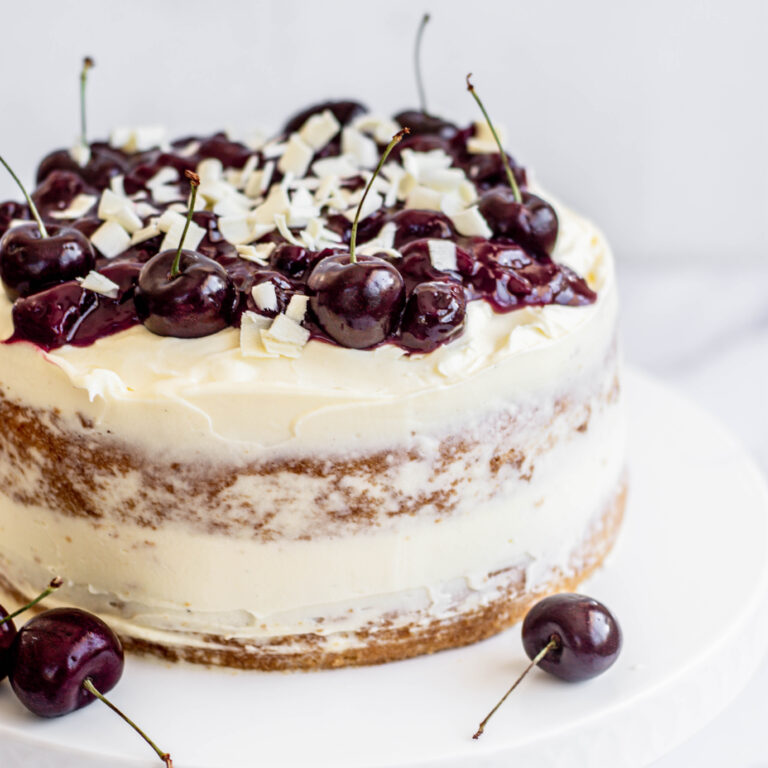
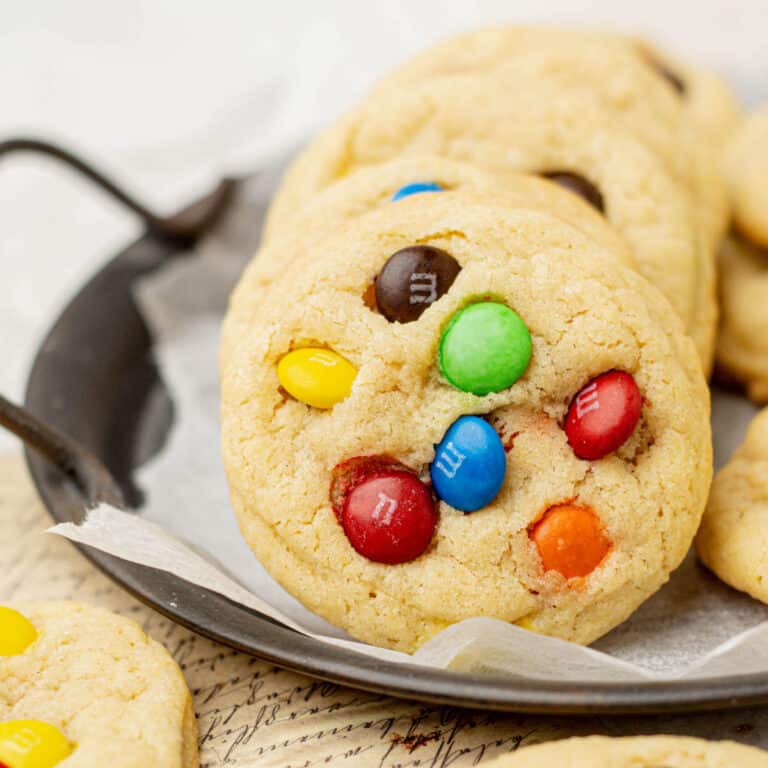
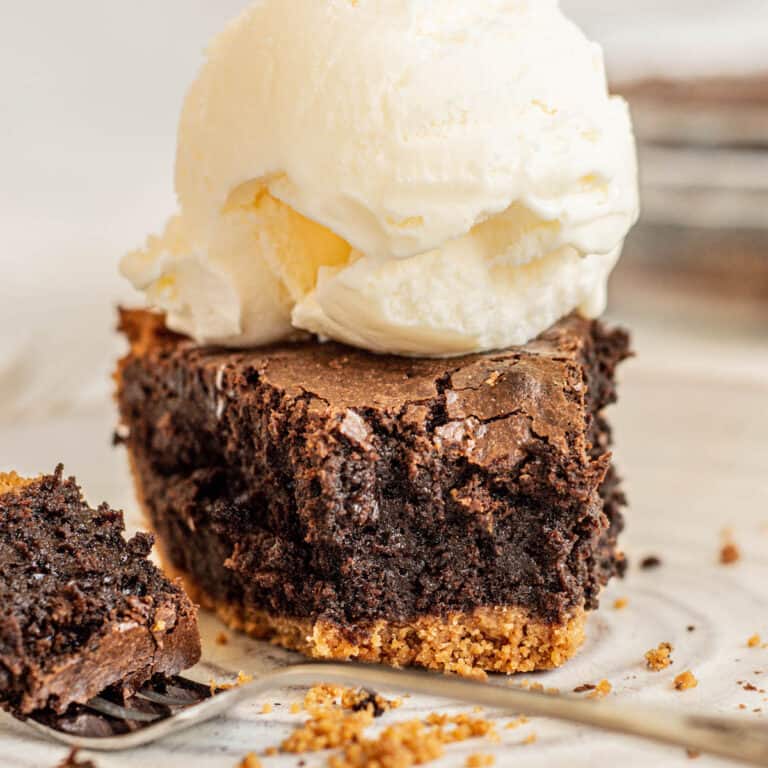
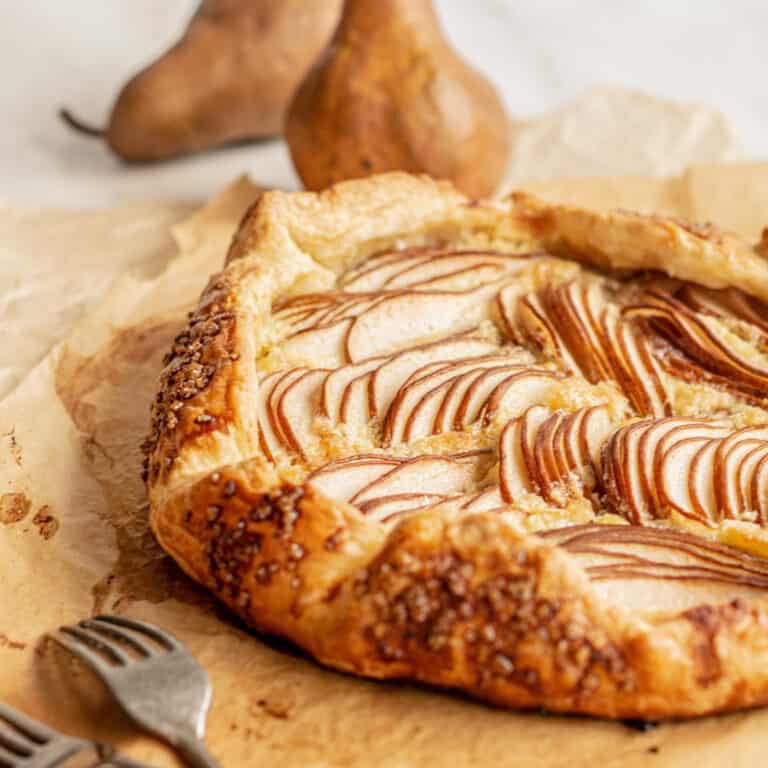
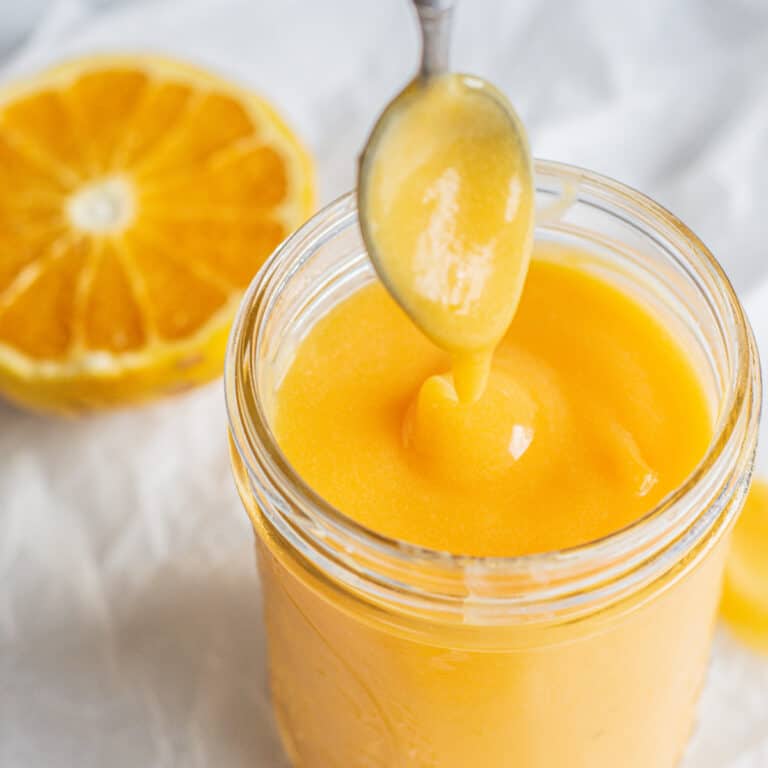
In reading through the recipe it calls for 50 grams of sugar which you state is 1/4 cup. However, Google says 50 grams = 1/2 cup. How much sugar should I use?
50g is 1/4 cup (1 standard US cup is 200g granulated sugar)
What is the lemon juice and vinegar for?
It reacts with the baking soda and makes an extra fluffy pancake 🙂
Have you tried freezing the batter? I have silicone cup cake liners that I want to use to freeze the batter, so I can have 2-3 pancakes at a time.
Hey I hadn’t tried this before. If you do, would love to know how they go 🙂
So incredibly easy to make and the end result is a light and fluffy pancake. I have made it as instructed and with buttermilk and have not been disappointed.
So happy you enjoyed them Mari! thank you!
I followed the instructions to the T and my batter came out extremely thick. Is that normal, because of the whipping cream? There’s no mention of what the consistency should be.
It should be airy but pourable. Did you use grams or cups to measure the flour? If you used cups it may have been over measured
My first time to make pancakes and it turned out great! i Followed the ingredients but i used half and half instead of cream because thats all i have and no milk 😅. We are so happy on the outcome. Yum yum! Thank you!
Thanks so much for this recipe. My 9 y/o son wanted pancakes and we ran out of store-bought pancake mix. We didn’t have regular milk, but had half-and-half and just put 1 1/2 cups of that. The batter was extremely thick, but very soft and tasty. I added a little bit of water to the batter to loosen it up a bit and now, it is perfect. Thanks so much!